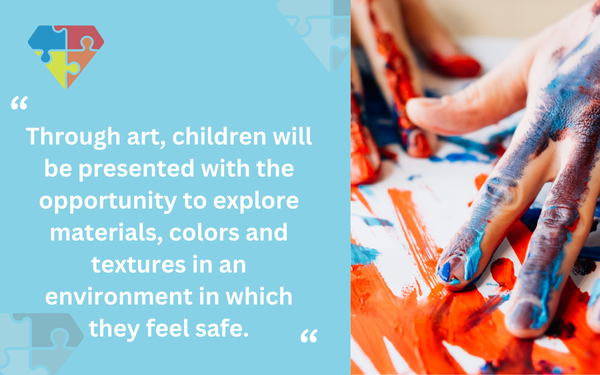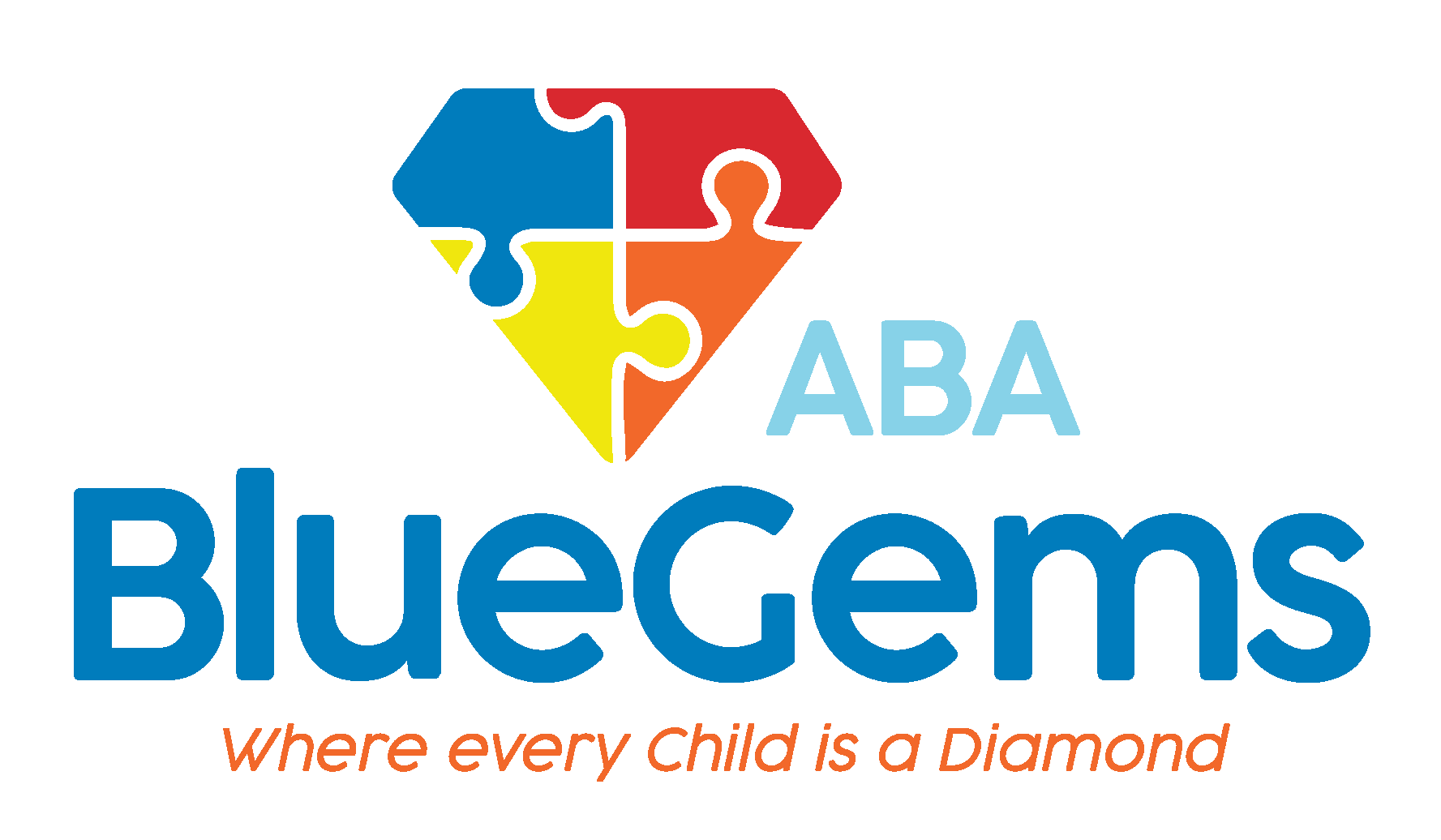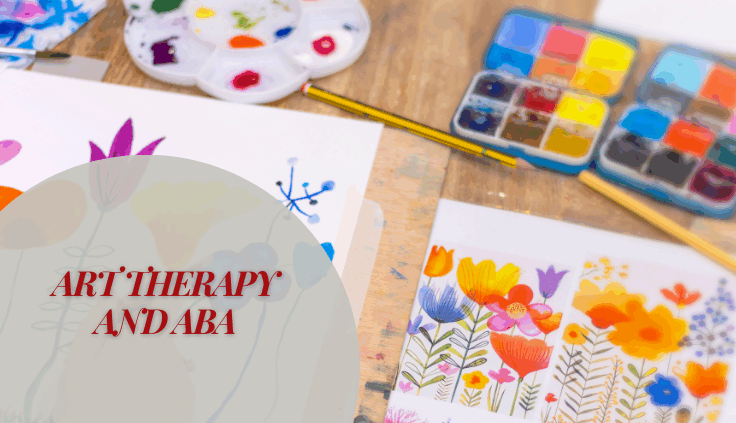Art Therapy and ABA
Helping children with autism spectrum disorder (ASD) manage their symptoms often takes a multi-pronged approach. Applied behavior analysis (ABA therapy) is considered the gold standard of treatment options, but there are many additional therapies that can work hand-in-hand with it to provide holistic care for children with autism.
One such example is art therapy. Through painting, sculpting, drawing and more, children with autism can express themselves, get a sensory-rich experience, improve their motor skills and receive reinforcement of ABA therapy principles in a fun, playful way.
For some children on the autism spectrum, art therapy can prove very effective, especially when used in tandem with ABA therapy.
Below, we’ll discuss how art therapy and ABA can complement each other.
Table Of Contents
- Art therapy and ABA can complement each other for a well-rounded, multi-sensory therapy experience.
- Art supports non-verbal expression, emotional regulation, and sensory exploration.
- ABA principles such as prompting and positive reinforcement can be integrated into art sessions.
- Art therapy encourages creativity, improves fine motor skills, and builds social interaction.
- Individualized plans combining both therapies can help generalize skills across contexts.
What is Art Therapy?
Art therapy uses art as the central aspect of its approach to treatment and support. Through various artistic activities, children can learn how to express themselves in new ways.
This is one of the biggest benefits of art therapy, especially for children with autism: It doesn’t rely on verbal communication. While art therapists may certainly communicate to their patients through words, the patient doesn’t need to speak in order to participate and receive the benefits of it.
Art therapy wasn’t designed specifically for individuals with autism, though it certainly works for them. In addition to helping children express how they’re feeling and what they’re thinking, it also provides a great opportunity for them to improve their motor skills — something that many children with autism have delays with.
Through painting, sculpting, drawing and other art forms, children will manipulate small and large objects, draw lines and other shapes, and use their hand-eye coordination to create things.
| Benefits of Art Therapy for Children with ASD | ABA Goals Supported |
|---|---|
| Non-verbal communication through creative expression | Supports communication and emotional expression |
| Sensory-rich experiences with colors, textures, materials | Helps manage sensory sensitivities and regulation |
| Improves motor skills via painting, sculpting, drawing | Enhances fine motor development and hand-eye coordination |
| Emotion regulation and calming strategies | Reduces anxiety and supports coping mechanisms |
| Opportunities for social learning in group settings | Builds interaction skills and cooperation |
| Flexible and child-centered learning | Easily integrates with ABA strategies like prompting and reinforcement |
How Does Art Therapy Relate to ABA Therapy?
Both art therapy and ABA therapy can address some of the most common symptoms of autism.
Children with autism often experience sensory overload and sensory sensitivities. Through art, children will be presented with the opportunity to explore materials, colors and textures in an environment in which they feel safe.

Instead of being presented with all these new things at once in a forced way, the children are able to interact with each different sensory input in a way and in a timeframe they’re comfortable with. ABA therapists can work directly with art therapists to present each child with the things that help calm them down, for instance.
Not only can art therapy be preemptive in this way, it can also be reactive. In other words, art therapy can help children manage their emotions if they’re feeling overwhelmed.
In addition, art therapy can help children improve their social interaction and communication skills — two focuses of ABA therapy. It can also expose them to new ideas, new approaches, new people and new perspectives.
How Can Art Therapy and ABA Complement Each Other?
As mentioned above, ABA therapists can work in tandem with art therapists to design a program that appeals directly to each individual child. If a child is drawn to certain textures, or is averse to them, the art therapy program can slowly integrate them into the plan so the child is given slow and steady exposure.
The ABA therapy team can take the lead here, serving as the guiding force in the art therapy and how it can best be integrated into the child’s overall treatment plan.
During art therapy sessions, ABA therapy principles, concepts and strategies can be integrated to help reinforce what the child is being taught — in the way they’re being taught it.
For example, they can be presented with cards that have colors on them if they’re learning their colors that way, and then use the cards as a way to request that color crayon. Positive reinforcement can also be used to reward the child for successfully making a request, for following directions or for doing anything else that aligns with their ABA therapy goals.
This consistency in approach is key to helping the child not only gain new skills but generalize them over different scenarios and situations.
Blue Gems ABA Provides All-Around Support to Children with ASD
Art therapy can be very beneficial to children with ASD, especially if used in conjunction with ABA therapy. In fact, the two therapies can work in tandem to provide patients with a sensory-rich experience that helps them express themselves, build motor skills and learn to communicate better.
At Blue Gems ABA, we provide all-around support to every child with autism we serve. We craft ABA therapy treatment plans that are specific to each individual child’s unique strengths, challenges and preferences, and integrate other forms such as art therapy where appropriate.
To learn more, please contact us today.
Q: What if my child is non-verbal?
A: Art therapy is especially helpful for non-verbal children, allowing them to communicate through drawing, painting, and sculpting instead of speaking.
Q: Can ABA strategies really be used during art?
A: Absolutely. ABA principles like reinforcement, prompting, and task analysis can be embedded in art activities to reinforce learning goals.
Q: Is art therapy only for creative children?
A: Not at all. Art therapy is about expression and exploration, not artistic talent. Every child can benefit from the sensory and emotional aspects of art.
Q: How do therapists coordinate both approaches?
A: ABA and art therapists can collaborate on treatment plans to ensure consistency, reinforce goals, and adapt activities to each child’s preferences and needs.




